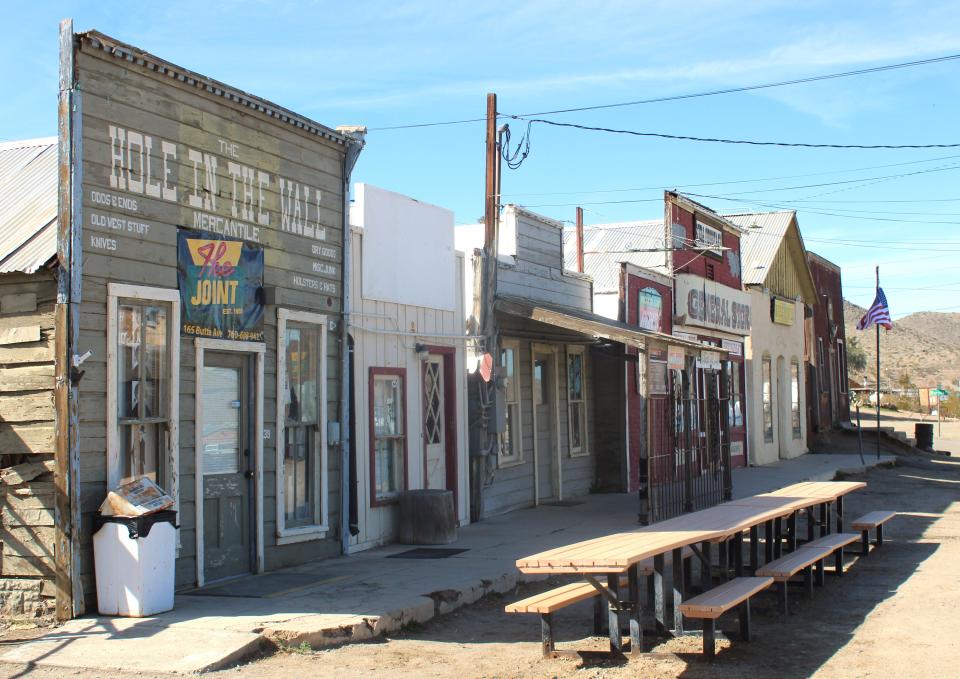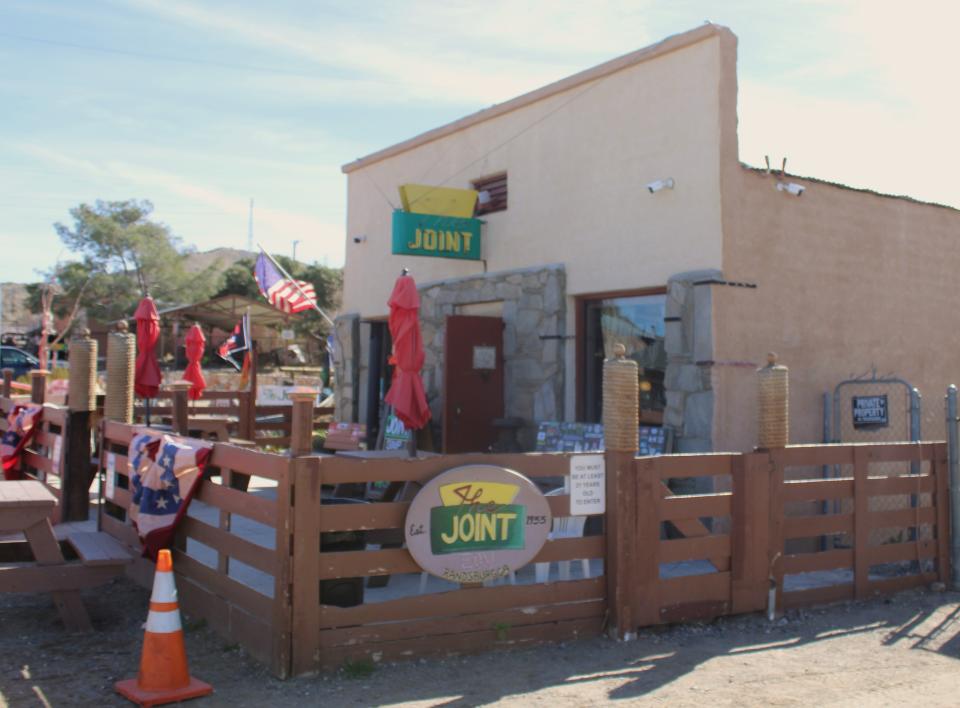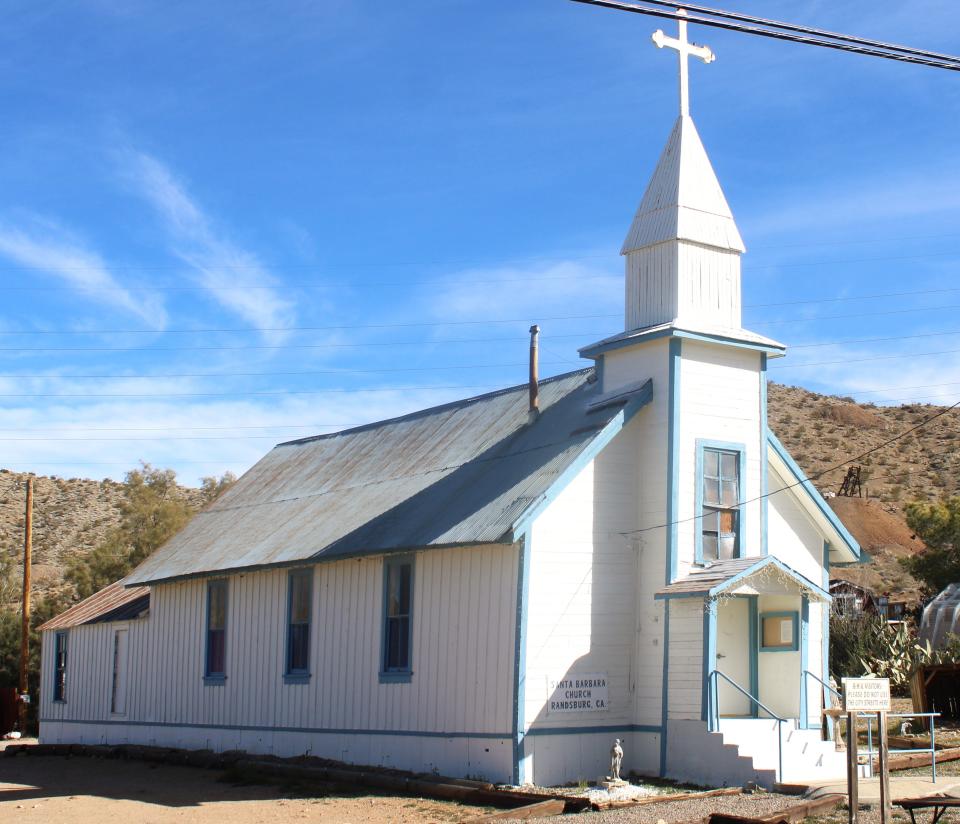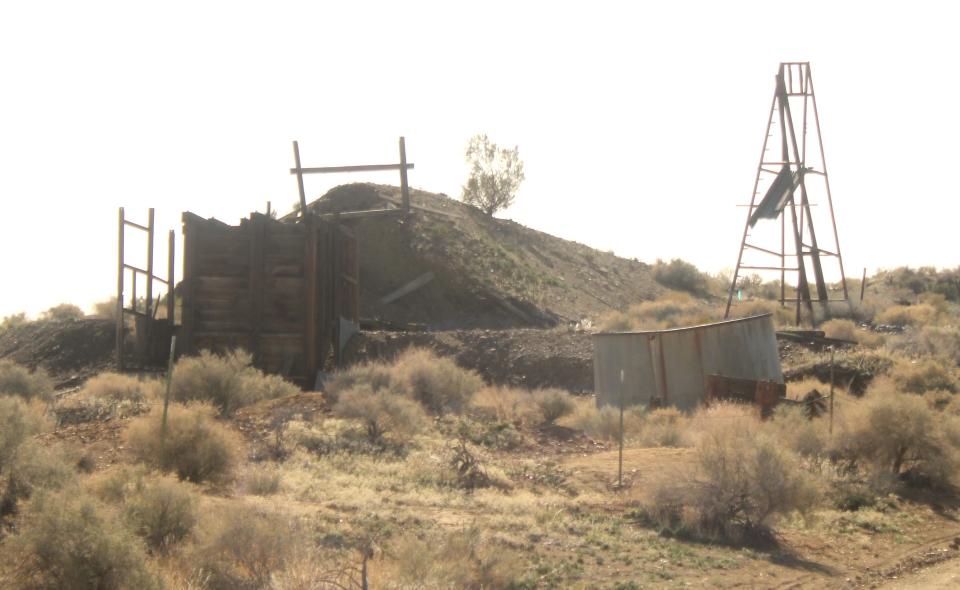What you need to know when you visit Kern County ghost town Randsburg
Standing midway down Butte Avenue, I believed I was in new filming for the hundredth Mad Max movie.
Dozens of RZRs, dune buggies, dirt bikes, off-road golf carts, and gyrocopters came screaming out of the northwest through this tiny burg.
Folks dressed head to toe in leathers, cotton, tree bark, and stretched-out leggings barreling through this living ghost town one mile south of Highway 395 made a person pause.
There were mullets on helmets. Sideburns on helmets. Mohawks on helmets, and helmets on helmets.
It was surreal, but I did not stand in the middle of the road for long, not wanting to end up as roadkill, which was being served for lunch, I was told, at the local park.
“It’s really good if it is fresh, with not too many tread marks,” a grizzled miner may have uttered.

Randsburg is a ghost town that's still plenty alive
I was in Randsburg, a supposed ghost town that seemed pretty alive.
“Fall, winter, and spring are our busiest times of year,” noted Neil, the owner of The Joint. “People love camping out in the desert nearby and then rolling in here for lunch and perhaps a cold beverage.”
Funny, “rolling in here” by the owner of ‘The Joint.’ Just saying.
Actually, in all transparency, stopping by any saloon usually makes my day. It gets mighty thirsty on the road.
I had traveled through Randsburg many times on my way here and there along Highway 395. It’s a quaint locale with friendly folks, an exciting history, and clean, free public restrooms in the town’s city park.
A must for a traveler.
The definition of a ghost town, according to Dictionary.com, is a town that was once thriving but has been completely abandoned. According to Geotab.com, a ghost town was once a thriving community that has dwindled over the decades. According to Oregon.gov, ghost towns are abandoned villages or cities, often with substantial visible remains.
Well, that last one could mean many towns and cities now in California.
“You know, Neil,” I said. “You live in a ghost town, according to what I’ve read.”
He just looked at me and wandered back into The Joint.
I should have stuck with the one definition I knew had to be accurate from theydon’tknowwhattheyaretalkingabout.com, which stated that a ghost town is what people call places they have not traveled to.
Randsburg is not a ghost town. Sure, there are ghosts, according to the paranormal folks, locals, and a few miners who told me they had shared bottles of whiskey with the spirits - okay, but it is not a ghost town in any sense of common sense.
Before Neil abandoned me in the street, he did state there was a ghost of a miner that sat atop the roof of The Joint. The ghost is supposedly a disgruntled ex-customer who was told eons ago that he was no longer welcome due to his bad behavior. I glanced up to ensure no wily bearded miner was lingering atop the building and dashed inside in case I had a dropped pickaxe on my noggin.

Randsburg may be tiny, but has a fascinating history
No, this tiny town 68 miles northwest of Victorville and 138 miles northeast of Los Angeles has a lot of life and a wonderfully interesting history.
Randsburg is known as one of the small towns within the gold and silver mining belt of Kern County. Randsburg, Red Mountain, and Johannesburg - other so-called ghost towns- were once hustling and bustling jurisdictions where gold and silver could be picked off the desert floor.
“Looky, Maxwell,” a dandy of a miner may have shouted after picking up a three-ton solid gold nugget. “I be rich!”
That is not true.
Randsburg is located in the Rand Mining District, named after the Rand Mountains, where it is located along with Red Mountain and Johannesburg.
According to the Los Angeles Daily News, three down-and-out miners wandered the Rand Mountains in 1895 and stumbled across a huge gold bonanza southwest of Ridgecrest - later to become Randsburg.
The miners who had been down-and-out were Frederic Mooers, John Singleton, and Charles Burcham, and rumor has it that Frederic smiled at his two buddies and said, “Guess we are no longer down-and-outers.”
Singleton may have replied, “I can’t wait to see the face on my mother-in-law now.”
But with all history, things can become a bit wonky. According to other research, Frederic Mooers and William Langdon found solid traces of gold in the Rand Mountains in 1894. It was in 1895 that Singleton and Burcham were brought into the partnership, along with Dr. Rose.
Whatever the case, the Rand Mining District was created in December of 1895, and a gold rush began. Some reports state that it was one of, if not the largest, gold rushes in California history, with the Yellow Aster mine being the center of gold discovery.
Starting with just a few folks, mining for riches soon turned into a boom, and by 1896, more than 1,500 people were calling the area home.
Of course, where there is one mine, many more started opening up as more and more deposits were located. King Solomon, Jolly Girls, Monkey Wrench, Bully Boy, and Look What I Found were just some of the mines that soon opened.
By the end of 1897, folks were getting very rich working the various mines in the Rand Mining District, especially the Yellow Aster, which produced more than $600,000 in gold, about $22,000,000 today.
Another rumor is that when Singleton’s mother-in-law heard the news, she said, “You call that money?”
So much more was coming out of the earth that it was hard to transport to various locations for processing, such as Garlock and Barstow. Shipping the ore over the newly built Randsburg Railways was slow due to the extent of the output, so a thirty-stamp mill was built in 1899 in Randsburg. Soon, a much larger one-hundred-stamp mill was called for to handle all the ore being taken from the various mines in the area.
By 1901, the Yellow Aster mine was kicking out $120,000 worth of gold each month, well over $4 million today. Silver was also mined with huge profits from adjourning mines covering the Rand Mountains.

Churches, brothels and gold
Like all boom towns, it wasn’t just miners that got into action. Plenty of saloons, gambling halls, and brothels showed up to ensure the miners did not walk away with all that cash in their pockets alone.
Churches began to sprout up along the narrow and congested streets to save the souls of the now nearly 2,500 citizens of Randsburg in 1897. Since some of the miners were married, as well as the shopkeepers, schools also were constructed.
It was a good time for all.
In 1898, two devastating fires erupted and nearly destroyed the entire town of Randsburg, but some quick-thinking individuals used dynamite to blow up structures, creating a break where the fire could not spread from block to block.
With the tough spirit of these pioneers, the town was rebuilt even better than before.
An interesting side note concerns neighboring Red Mountain, where numerous accounts state that during prohibition, folks from Los Angeles would travel there during the weekends to partake in the over 30 saloons and brothels in the area.
A tidbit here: Dr. Rose Burcham is not only considered one of the first pioneer female physicians in Southern California, but in 1904, the Los Angeles Times honored her with ‘Men of Achievement in The Great Southwest Mining.’ - the only successful woman mine operator in the southwest.
A hardy and intelligent woman, she outlived her mining partners, dying in 1944 after retiring to Alabama.
By 1934, with the depression and the ore not producing as much gold or silver as in the past, the town started to dry up. Folks moved on to the next boomtown, but today, Randsburg is still alive with shops, restaurants, salons, and places to stay for the night.

Things to do and see around Randsburg
The small town offers wonderful events throughout the year, including Old West Day, Bluegrass Jamboree, Mohave Dirt Bike Rally, Don’t Fall Into An Empty Mineshaft Day, and more for the visitor.
And if camping in the vast open desert isn’t your cup of Joe, then there are places to stay for the night in Randsburg, from the Cottage Hotel Bed and Breakfast to numerous Airbnbs - some supposedly used as cribs utilized by the soiled doves in the day. I may have to use the Old West Dictionary for that description.
Though I’ve traveled through Randsburg for years, I learn something new with each visit, and isn’t that the way adventures go?
Daniel, a bartender at the Joint, poured me a drink. “Are you coming back?”
I may be there already.
John can be contacted at beyersbyways@gmail.com
This article originally appeared on Salinas Californian: What you need to know when you visit Kern County ghost town Randsburg

